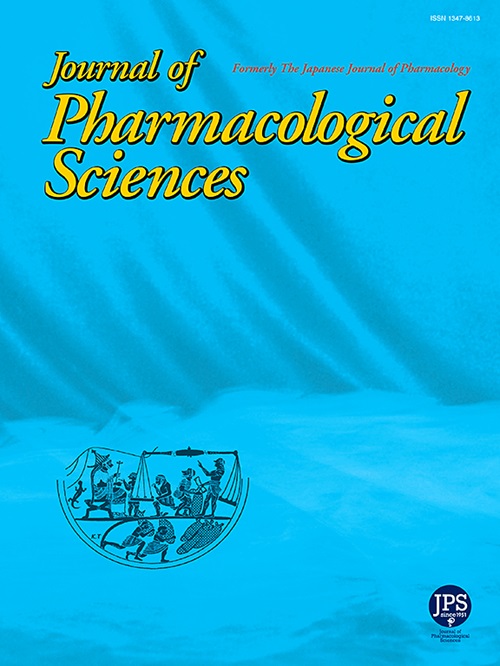早期视神经脊髓炎抗体诱导小鼠脑组织星形胶质细胞终足水通道蛋白4及相关蛋白的分子变化
IF 2.9
3区 医学
Q2 PHARMACOLOGY & PHARMACY
引用次数: 0
摘要
视神经脊髓炎谱系障碍(NMOSD)的特点是产生针对水通道蛋白4 (AQP4)的自身抗体。由于NMOSD会逐渐导致不可逆和严重的神经损伤,因此了解抗aqp4抗体结合诱导的初始分子变化对于设计早期干预措施至关重要。然而,关于AQP4在脑组织中丢失之前抗体的作用的知识是有限的。利用急性制备的小鼠脑切片,我们旨在研究NMO模型抗体对AQP4及其相关蛋白的初始分子影响。我们采用了两种不同类型的NMO模型抗体E5415A和E5415B;E5415A同时识别M1和M23亚型,而E5415B只与M23亚型结合。我们发现E5415A而不是E5415B破坏了AQP4均匀的血管周围定位,导致断裂。我们进一步研究了这些变化对AQP4相关蛋白的影响,发现即使AQP4定位模式变得碎片化,AQP4和抗肌营养蛋白-糖蛋白复合物(DGC)组分之间的强共定位仍被保留。因此,我们的研究揭示了星形细胞末足AQP4通道响应NMO模型抗体的初始分子变化,并突出了NMOSD发生的早期病理事件。本文章由计算机程序翻译,如有差异,请以英文原文为准。
Early neuromyelitis optica antibody-induced molecular changes in aquaporin 4 and associated proteins at astrocyte endfeet in murine brain tissues
Neuromyelitis optica spectrum disorder (NMOSD) is characterized by the production of autoantibodies against aquaporin 4 (AQP4). Because NMOSD progressively causes irreversible and severe neurological damages, understanding the initial molecular changes induced by anti-AQP4 antibody binding is crucial for designing early interventions. However, knowledge about the effects of the antibodies before AQP4 loss in brain tissues is limited. Using acutely prepared mouse brain slices, we aimed to investigate the initial molecular impact of NMO model antibodies on AQP4 and its associated proteins. We employed two different types of NMO model antibodies, E5415A and E5415B; E5415A recognizes both M1 and M23 isoforms, whereas E5415B exclusively binds to M23. We found that E5415A but not E5415B disrupted the uniform perivascular localization of AQP4, leading to fragmentation. We further addressed the impact of these changes on AQP4-associated proteins and found that strong colocalizations between AQP4 and dystrophin-glycoprotein complex (DGC) components were preserved, even after AQP4 localization pattern became fragmented. Thus, our study reveals the initial molecular changes in the AQP4 channel at the astrocytic endfeet in response to NMO model antibodies and highlights the early pathological events occurring in NMOSD.
求助全文
通过发布文献求助,成功后即可免费获取论文全文。
去求助
来源期刊
CiteScore
6.20
自引率
2.90%
发文量
104
审稿时长
31 days
期刊介绍:
Journal of Pharmacological Sciences (JPS) is an international open access journal intended for the advancement of pharmacological sciences in the world. The Journal welcomes submissions in all fields of experimental and clinical pharmacology, including neuroscience, and biochemical, cellular, and molecular pharmacology for publication as Reviews, Full Papers or Short Communications. Short Communications are short research article intended to provide novel and exciting pharmacological findings. Manuscripts concerning descriptive case reports, pharmacokinetic and pharmacodynamic studies without pharmacological mechanism and dose-response determinations are not acceptable and will be rejected without peer review. The ethnopharmacological studies are also out of the scope of this journal. Furthermore, JPS does not publish work on the actions of biological extracts unknown chemical composition.

 求助内容:
求助内容: 应助结果提醒方式:
应助结果提醒方式:


